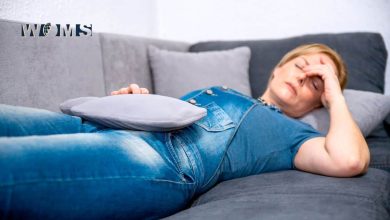Seven Must-Have First Aid Kit Items That You Cannot Miss

Every home and workplace requires a first aid kit. You may never know what conditions may arise so a first aid kit is a must.
How many times as a kid, you had to put a band-aid on your wounds that you got while playing? None of us can remember the count.
Children are more about playing games and enjoying a carefree life even if they are school going. They will never deny an opportunity to play their favorite game with their peers. And while playing, they get injured or get bruises. Generally, if the injury is minor, there is always a first-aid kit available to clean and dress those wounds.
Similarly, while working in the kitchen, we are likely to get cuts. It is necessary to cover our wounds or at least apply an antiseptic to keep microorganisms at bay.
It is essential to have a first-aid kit readily available at your home or in your car to attend to such small injuries. The first-aid items can provide quick relief and save you a hospital visit.
Imagine enjoying an outdoor picnic with your family, and your kid gets his or her knee injured. If you lack a first aid kit, your picnic will end up in a clinic.
Read - How to boost your healing process?
There are many essentials that you can have in your first-aid box that can help you deal with small injuries and pain episodes. If you or your kid have pulled a muscle while playing and running out of painkillers, you can apply a pain patch for quick relief. These patches are non-invasive pain relievers that work in minutes to help you recover from discomfort.
Let us see what else we shall have in our first-aid box as a mandatory essential.
Essentials to be in a First aid kit
A first aid kit must contain things that are required to address emergency conditions. The essentials which are required in a First aid kit are:
1. Hand Sanitizer
While we are on the roads, or out in a place where we do not have quick access to water for washing hands, hand sanitizers can help. Before we can tend to a wound, it is necessary to sanitize our hands to prevent the injury from getting more germs and our hands as well.
You can easily find hand sanitizers in small bottles. They may not be as effective as water, but their alcohol content reduces the chances of catching germs.
2. Pain Medications
Headaches or back pain are a common occurrence, and they are first to appear when we have a stressful day. Even if you are going out on vacations or for an outdoor picnic, pain medications are a must-have thing in your first-aid box. Try not to pile your bix with a lot of tablets but keep the readily available one.
You can have acetaminophen to combat acute pain. It is the most basic pain medicine that is safe to take for most people, and it barely has any side effects. You can also have anti-inflammatory pain medications such as ibuprofen that relieves pain and inflammation both. They are the important first aid necessities.
3. Antiseptic Creams or Ointments
Got a cut on your hand? Your first intention will be to go and grab a bandage. Open wounds such as cuts are an open house for bacterial attacks. If left uncovered, these wounds could form abscess or cause infections. Before you cover it with a band-aid, it is essential to seal it with an antiseptic to avoid any bacterial infection. While you are assembling your first-aid box, make sure to keep an antiseptic cream or ointment for wounds.
4. Adhesive Bandages
What should go into a first aid kit? I think this question comes to every mind who is looking out for first aid kit items. While dealing with an injury that involves bleeding, you will need to cushion it to heal after you have cleaned it.
Adhesive bandages are sticky from the sides to hold them at a place while they prevent the wound from getting open again. These bandages work best for injuries that require extra paddings such as stitches or deep cuts. It is one of the important first aid necessities.
5. Irrigation Syringe
When we get our knee or hands injured due to falling on a concrete ground or sand, besides bleeding, there is debris too that we get from the ground. Large-sized syringe tubes can be beneficial to wash away the debris from such wounds.
Try to clean the wound with water first instead of cleaning it off with a cotton pad. Cleaning with the cotton pad will spread the debris and germs to surrounding areas while washing it away will keep it from spreading.
6. Itch Reliever
If you are planning a vacation outdoors or deciding to go camping, then having an itch reliever in your first-aid box is a must. Plants have many small insects around it that can cause allergic reactions to our skin.
If you are out for camping, then there is a high chance of getting bug bites that may cause rashes and itches. Having an itch reliever will quickly soothe the rashes and prevent it further.So. itch reliever proves to be a first aid necessities.
7. Cloth Tape
Cloth tape is one of the first aid necessities. They are also known as medical tape or first-aid tape. These are essential in keeping the bandages at a place. It can also help as a protective wrap on inflamed joints such as knees or small joints of fingers or toes. If your kid has a sprained joint, wrapping this medical tape will prevent it from excessive movement, keeping the joint pain and pressure-free.
Conclusion
Injuries are often accidental, and we can get it anywhere. It can be in our office, on the road, at home, or on vacation. It is crucial to have a first aid kit equipped with all the necessary tools that can help us at the moment.
There are many things that you can keep in your first aid kit. Be sure to have gloves whenever you are dealing with a bleeding wound. You can also have stomach medications to ease the heartburn or dyspepsia. It is better to prevent a small injury on the spot than waiting for it to get worse. What should go into a first aid kit? I think this article has cleared the question regarding this matter.




